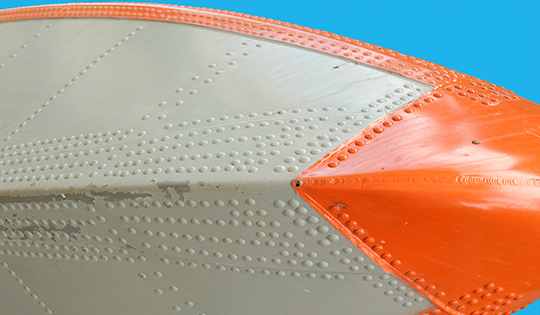Lightweight Innovations For Tomorrow (LIFT) formed a team of manufacturers and universities that will work to develop a database and computer models that better predict the way aluminum alloys corrode after being put in use as parts for airplanes or other forms of transportation.
The Ohio State University and United Technologies Research Center, the research and innovation engine of United Technologies Corp. (UTC), will lead the project in collaboration with Lockheed Martin, DNV GL, and the University of Michigan. The project goal is to identify new ways to mitigate corrosion within aluminum alloys.
Funding for technical projects comes from both LIFT and project partners. LIFT isa public-private partnership committed to the development and deployment of advanced lightweight metal manufacturing technologies and is funded in part by the Department of Defense with management through the Office of Naval Research.
“Our role is identifying innovations that are ready to make the jump from the lab to production, then leveraging the right expertise and resources to deliver results,” said Alan Taub, LIFT chief technical officer. “It’s exciting to see all the potential we have to transform lightweight metal manufacturing, and to help move those technologies into production.”
“Currently, engineers are forced to use experience and costly labor-intensive testing to anticipate how heating, shaping, and actual use will affect the corrosion resistance of a specific part,” Taub noted. “Identifying a new database and models will improve the ability of laboratory computer simulations to predict corrosion based on the microstructure of every area of a finished component.”
“The project team will concentrate its efforts on classes of aluminum alloys that include copper, lithium, magnesium, manganese and zinc,” he continued. “There is a potential for weight reduction if parts can be made thinner without compromising performance due to corrosion after significant time in service.”
Kenneth Smith, project principal investigator and staff engineer, Materials Chemistry, at UTRC, added, “We’ve come a long way from applying a coat of paint to prevent steel from rusting, but there is still a lot to learn about the way shaping a part from one of the new aluminum alloys affects the way it corrodes once it is put to use. Using sophisticated computer simulations provided by LIFT will save design time and weight as we incorporate more of these metals into aircraft and other forms of transportation.”
According to Rudy Buchheit, associate dean and professor of Materials Science and Engineering, The Ohio State University and a project investigator, the team will take a two-pronged approach to building predictive computer models. “First, we will use a well-characterized system to ensure all the essential components are included,” he said. “We will then extend our work to test one of these newer alloys after they have been shaped in various ways. Those results will allow us to build a new materials properties database with very precise information about metal microstructure and corrosion.”
John Allison, professor of Materials Science and Engineering at the University of Michigan, and another project investigator said, “What we already know and what we will learn during the course of this project will be captured in advanced computer models that can be used by our industry partners to take into account everything from the original microstructure of the alloy to the very localized effects of every bend, squeeze or stretch of the manufacturing processes that create a finished part.”

